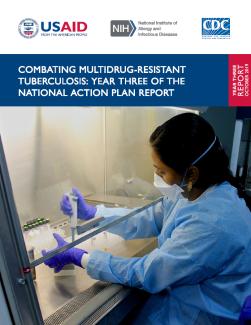Tuberculosis (TB) kills more people than any other infectious disease. In 2017, ten million people developed this deadly disease, and 1.6 million lost their lives as a result. Mycobacterium tuberculosis (MTB), transmitted through the air from person to person, causes TB. It is present in every country in the world, including the United States, which reported more than 9,000 cases of the disease in 2017. Although TB is both treatable and preventable, treatment requires multiple drugs for at least six months; failure to treat the disease appropriately can lead to drug-resistant TB (DRTB).
DR-TB, as defined in this Report, encompasses TB that is resistant to at least rifampicin (RR-TB), the most-effective drug in the regimen required to treat TB. Multidrug-resistant TB (MDR-TB) is resistant to isoniazid (the second-most-vital drug in the regimen), as well as to rifampicin, and extensively drug-resistant TB (XDR-TB) is resistant to both rifampicin and isoniazid, as well as to drugs used to treat MDR-TB. Developing any type of DR-TB often has devastating effects on the individuals who develop the disease, as well as on their families. They endure long, toxic, and complicated regimens; the anxiety of potentially transmitting the disease to loved ones; and the loss of income because of illness, isolation, and stigma. In addition to the impact on individuals, families, and communities, any type of DR-TB is a significant global health-security threat. Outbreaks of DR-TB have serious consequences for health care and economies, not only because of the very high cost of treatment, but also because of the burden the disease places on providers, institutions, and national health budgets.

